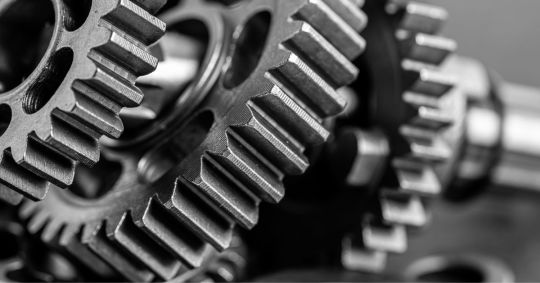Test Rig Technology: Engineering Insights for Optimal Performance

Introduction
In the world of engineering and manufacturing, making sure the optimal performance of machinery and components is critical. Test rig technology plays a highly important role in this process, providing the means to simulate real-world conditions and evaluate the performance, durability, and reliability of various systems. This blog explores the details of test rig technology, shedding light on its importance, applications, and engineering insights it offers for achieving an efficient performance.
Understanding Test Rig Technology
Test rig technology involves the use of equipment designed to replicate the operating conditions of machinery or components. These rigs are equipped with sensors, actuators, and data acquisition systems that monitor and record performance metrics under controlled conditions. By simulating real-world scenarios, test rigs allow engineers to find issues, validate designs, and refine processes before use in actual operations.
Test rigs can be widely classified into mechanical, electrical, and hydraulic systems, each designed to specific testing requirements. Mechanical test rigs are used to assess the structural integrity and fatigue life of materials, while electrical test rigs evaluate the performance of electrical circuits and components. Hydraulic test rigs, on the other hand, are created to test fluid power systems, testing their efficiency and reliability.
Applications of Test Rig Technology
The applications of test rig technology spread across a wide range of industries, from aerospace and automotive to manufacturing and energy. In the aerospace sector, test rigs are used to simulate the extreme conditions that aircraft components may encounter during flight, such as high altitudes, rapid pressure changes, and intense vibrations. This testing is a necessity for the safety and reliability of aircraft systems.
In the automotive industry, test rigs play a vital role in evaluating the performance and durability of engines, transmissions, and other highly important components. By simulating real-world driving conditions, engineers can assess fuel efficiency, emissions, and overall vehicle performance. This data is invaluable for refining designs and ensuring compliance with strict regulatory standards.
Manufacturing and energy sectors also benefit from test rig technology. For example, in manufacturing, test rigs are used to validate the performance of machinery and production lines, identifying potential bottlenecks and improving efficiency. In the energy sector, test rigs are made to evaluate the reliability of power generation and distribution systems, making sure service and optimal performance are not interrupted.
Engineering Insights from Test Rig Technology
One of the primary benefits of test rig technology is the wealth of engineering information it provides. By recording detailed performance data under controlled conditions, engineers get a deep understanding of how systems behave in real-world scenarios. This information is key when identifying weaknesses, optimising designs, and enhancing overall performance.
Test rig technology also allows for the development of predictive maintenance strategies. By analysing the data collected during testing, engineers can see patterns and trends that may lead to potential failure points. This proactive approach allows for timely maintenance and repairs, reducing downtime and extending the lifespan of machinery and components.
Test rig technology supports innovation by allowing the quick prototyping and testing of new designs. Engineers can quickly assess the feasibility and performance of novel concepts, making delicate improvements based on real-world data. This speeds up the development process and maintains continuous improvement in engineering practices.
Challenges and Future Trends
Despite its numerous advantages, the incorporation of test rig technology comes with its challenges. The initial setup and calibration of test rigs can be difficult and time-consuming, requiring specialised knowledge and expertise. Also, the accurate simulation of real-world conditions demands precise control and monitoring, which can be technically demanding.
The future of test rig technology is poised for exciting advancements. The integration of advanced sensors, IoT (Internet of Things) connectivity, and artificial intelligence promises to improve the capabilities of test rigs, which provides an even more detailed and actionable insight. These technologies will enable real-time monitoring and analysis, further improving the efficiency and effectiveness of testing processes.
In addition to this, the growing emphasis on sustainability and energy efficiency is driving the development of eco-friendly test rig solutions. Innovations in renewable energy testing and the use of environmentally friendly materials are set to play a significant role in the future of test rig technology.
Conclusion
Test rig technology is an irreplaceable tool in the engineering and manufacturing sectors, offering invaluable insights for achieving optimal performance. By simulating real-world conditions and capturing detailed performance data, test rigs enable engineers to validate designs, refine processes, and develop predictive maintenance strategies. Despite the challenges that come with its implementation, the future of test rig technology looks promising, with advancements in sensors, IoT connectivity, and AI set to further enhance its capabilities. As industries continue to grow, test rig technology will remain at the forefront of innovation, driving continuous improvement and ensuring the reliability and efficiency of critical systems.
To read more about the latest in the engineering industry, head over to our knowledge base.
Need help finding the right solution?
Our experienced team is here to provide expert advice and help you choose the perfect component for your application. Contact us today to discuss your requirements.